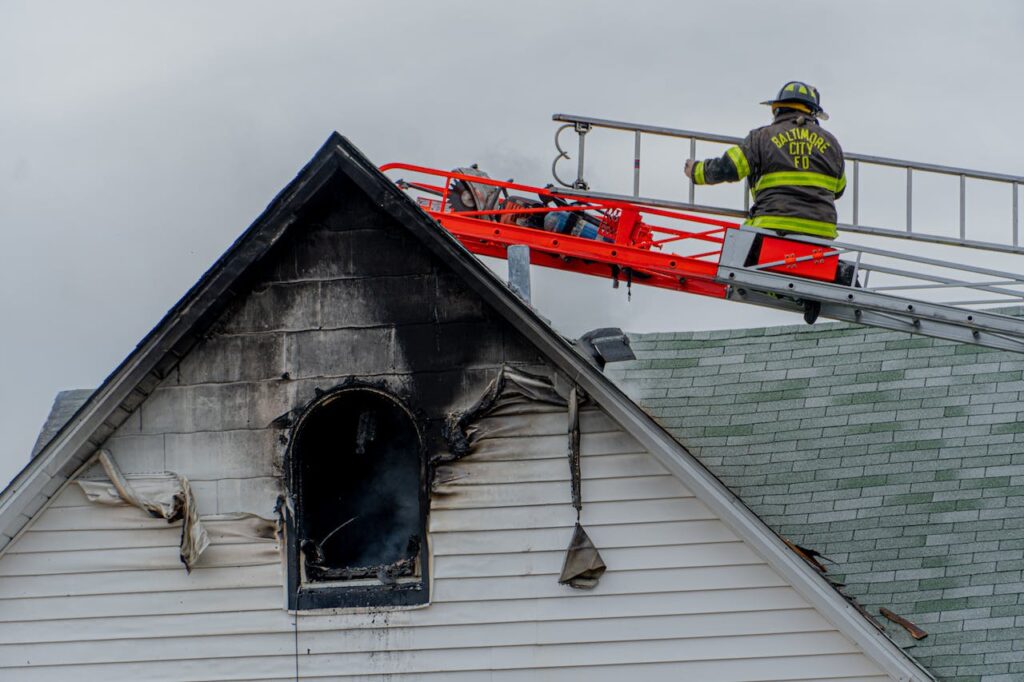Fire safety is a priority that can’t be ignored, perhaps more so in a home setting than anywhere else. We should all know some basics. And it goes for everybody. Everyone you live with should at least be aware of what to do in some most common scenarios. We have to understand – it’s not about being a hero. You don’t have to magically turn into an expert firefighter. Just enough to get by – to get you and your loved ones into safety and not into a paralyzed panic mode.
Evacuation Plan
Every single second counts when it comes to fire emergencies. Be familiar with your home’s layout and try to identify a few safest escape routes and exits. Don’t go overboard. There are a few focal points around the house that are quite easy to predict. How? Well, almost 50% of fires at homes start in the kitchen and are nothing more than cooking accidents. Then, we have heating malfunctions and electrical fires. And let’s be honest, we know where we keep these specific devices around the house, how often we use them, where the sockets are – and what potential threats they pose. Of course, all of that varies and there’s more to wiring and heating than meets the eye, but you get the gist.
Get a Head Start
The sooner you know something’s up, the better. That’s why you need smoke alarms. Install them strategically throughout your home. Regularly test and change their batteries. When these alarms go off, treat it as a serious signal – it’s your first line of defence against potential danger.
Your Immediate Response
Meet your safety sidekick – an extinguisher. You need to know where it is, understand how to operate it, and ensure it’s always charged. In case of a small fire, this is your chance to get rid of it before it escalates into something serious. Don’t forget to get the right type – a traditional water fire extinguisher is a pretty good choice but the ABC model offers more versatility.
Regular Maintenance Checks
This next point is closely related to the previous paragraph. Fire safety is an ongoing commitment. We have to make sure everything works properly in case we’re ever going to have to use it. Regularly inspect smoke alarms, don’t forget to service fire extinguishers now and then, and check your emergency kits to ensure they are in working order. Consistent maintenance is your best defence.
Emergency Kit Essentials
Create a practical emergency kit with essentials like a flashlight, first aid supplies, and important documents. Keep it in an easily accessible spot so that you can easily get to it and use it in the event of an emergency.
Fire-Safe Habits for Daily Living
Here’s a handful of some simple things to keep in mind. If you stick to these, you reduce the risk of fire to an absolute minimum. And that’s what you want.
- Never leave cooking unattended.
- Keep flammable items away from heat sources.
- Don’t leave any candles burning when you leave a room.
- If you smoke, do it outside, and get rid of cigarette butts the right way.
Keep Your Cool
Look, when a fire starts – it’s scary. But don’t panic. Easier said than done, right? Be that as it may, panic is your adversary. Do your best to stay calm, follow your plan, and prioritize getting everyone out safely. Remember, all your stuff – you can get that back. A house can be rebuilt. Lives cannot. A level head can be the difference between a close call and a catastrophe. In the realm of fire safety, a bit of preparation goes a long way. Make safety measures a routine, share the plan with everyone in your household, and stay vigilant. It doesn’t take that much. Home is where the heart is – let’s keep it safe and secure.
